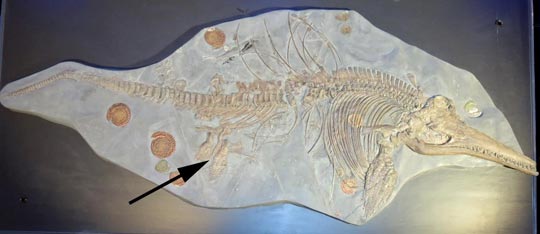Are Palaeontologists Naming Too Many New Species?
Cautionary Tale When It Comes to Naming New Species from Fragmentary Fossils
In the 19th century when scientists were beginning to understand that there were many different types of dinosaur, lots of new species were erected, often from the most fragmentary of fossils. As the western United States and Canada were explored, large quantities of dinosaur fossil material came to light. This led to palaeontologists naming many new species. Famous dinosaurs such as the hadrosaurid Trachodon (T. mirabilis), which graced an amazing number of dinosaur books in the 1960s and 1970s, named in 1856 by the American palaeontologist Joseph Leidy, is a typical example.
Leidy described Trachodon from just a few teeth found in Montana (Judith River Formation). Today, palaeontologists regard the genus Trachodon as nomen dubium (its validity is doubted). Those teeth used to describe this iconic duck-billed dinosaur probably represent several different plant-eating dinosaurs both hadrosaurs and even horned dinosaurs (ceratopsians).
As Seen in Numerous Dinosaur Books in the Late 20th Century – Trachodon

Picture credit: Everything Dinosaur
Recognising new Fossil Species
It is not just the Dinosauria that has suffered from overzealous species naming, however, a comprehensive review of variations in ichthyosaur bones will help scientists to recognise new fossil species. Dean Lomax (Manchester University) and Professor Judy Massare (SUNY College at Brockport, New York, USA), have examined hundreds of Ichthyosaurus specimens and they urge caution when it comes to erecting new species based on the evidence of a few fragmentary elements or isolated fossil remains.
Writing in the “Geological Journal”, the pair of scientists report that by focusing on just one part of the anatomy of an Ichthyosaurus an appreciation of the variation within a species can be obtained. Their paper looked at the hind fin, (back paddle), the purpose being to evaluate different forms amongst the six known species that make up the Ichthyosaurus genus. In total, ninety-nine specimens were examined, providing useful information on the variations within different species of “fish lizard”.
A Fossil Specimen of Ichthyosaurus somersetensis Named and Formally Described in 2017

Picture credit: Dean Lomax/Manchester University
Large Sample Size Helps to Provide Robust Results
Early in their research, the scientists found different types of hind fin that initially appeared to represent different species. As more specimens were studied, they found further examples of variation between the hind fins of individual animals. The hind fins differed in a number of ways, hind fins had different numbers of bones, their shape differed and the size of the hind fin also varied. From this work, it was concluded that a single hind fin alone could not be used to distinguish amongst the species of Ichthyosaurus, however, particular variations were more common in certain species than in others.
Palaeontologist Dean Lomax explained:
“As we have such a large, complete sample size, which is relatively unique among such fossil vertebrates, our study can help illustrate the limitations that palaeontologists face when dealing with few or even just one specimen.”
This new study shows that with only a few specimens in the sample, features can be found that differ substantially from one specimen to the next and this can cause confusion if these autapomorphies (distinctive traits) are used to classify organisms. It can appear that there are several species. In reality, with a much bigger sample, the gaps in the “unique” variations are filled in, showing that differences are simply the result of individual variations within a population.
Visit the website of Dr Dean Lomax: British Palaeontologist Dr Dean Lomax.
Judy Massare added:
“We described a few hind fins, which might have been called a new species if they were found in isolation. Instead, we had enough specimens to determine that it was just an extreme variation of a common form.”
How Many Types of Ichthyosaurus Existed?
Picture credit: James McKay
Palaeontologists – “Lumpers” and “Splitters”
Palaeontologists can be put into two distinct groups when it comes to naming new species, the “lumpers” and the “splitters”. “Lumpers” group similar specimens together, whilst in contrast, the “splitters” opt to split specimens into new species. In this new study, if the team opted to split-up the specimens based on the variation found, it would suggest that there were a large number of species.
Dean Lomax stated:
“If we considered the variation as unique, it would mean we would be naming about 30 new species. This would be similar to what was done in the 19th century when any new fossil find, from a new location or horizon, was named as a new species if it differed slightly from previously known specimens.”
Just like the example of Trachodon given above.
As more fossil material is found and better dating techniques are developed, the decision to erect a new species has to be given extremely careful consideration. This new study into variation within an extinct group of individual specimens can help scientists to make appropriate choices when it comes to classification.
The scientific paper: “Hindfins of Ichthyosaurus: effects of large sample size on ‘distinct’ morphological characters” by Judy A. Massare and Dean R. Lomax published in the Geological Journal.
Everything Dinosaur acknowledges the help of Manchester University in the compilation of this article.
Visit the Everything Dinosaur website: Everything Dinosaur.


